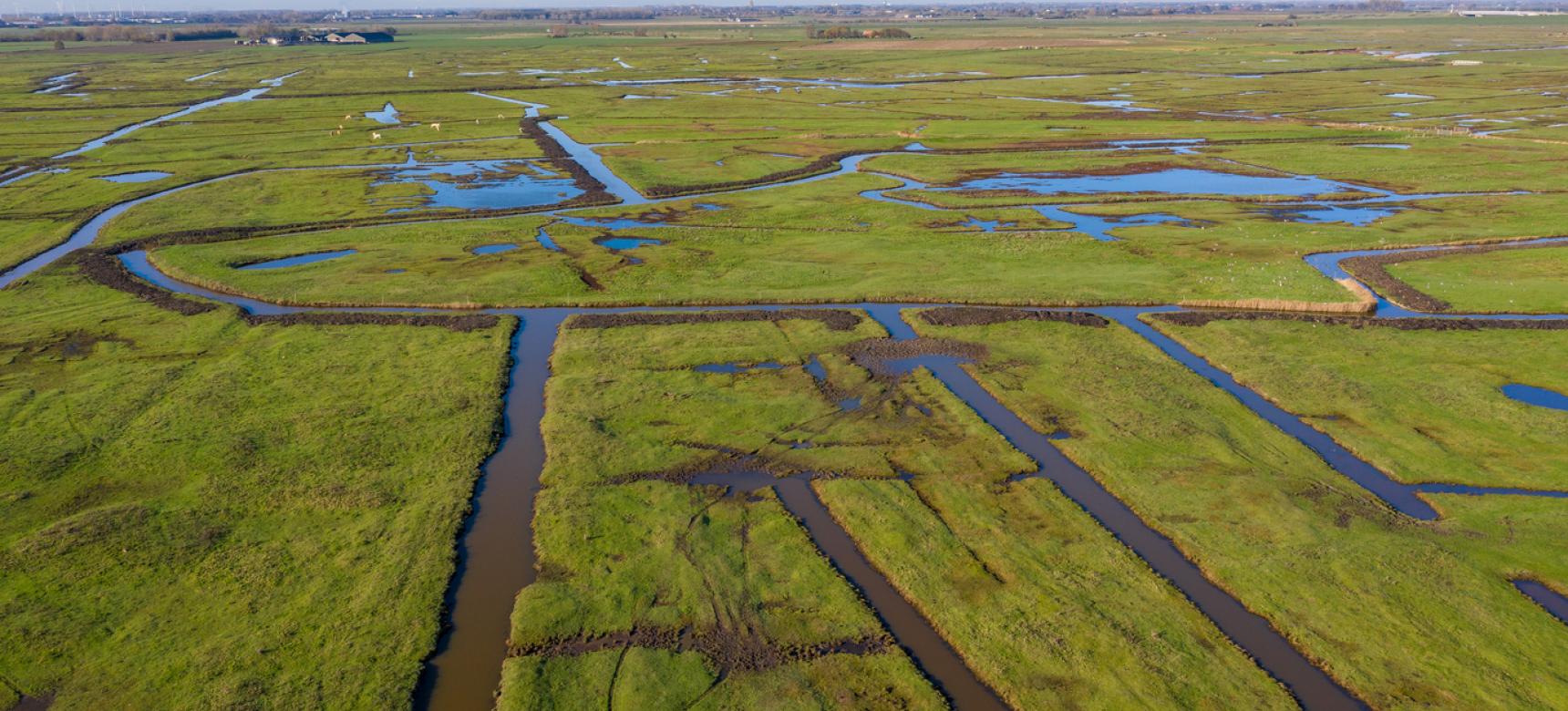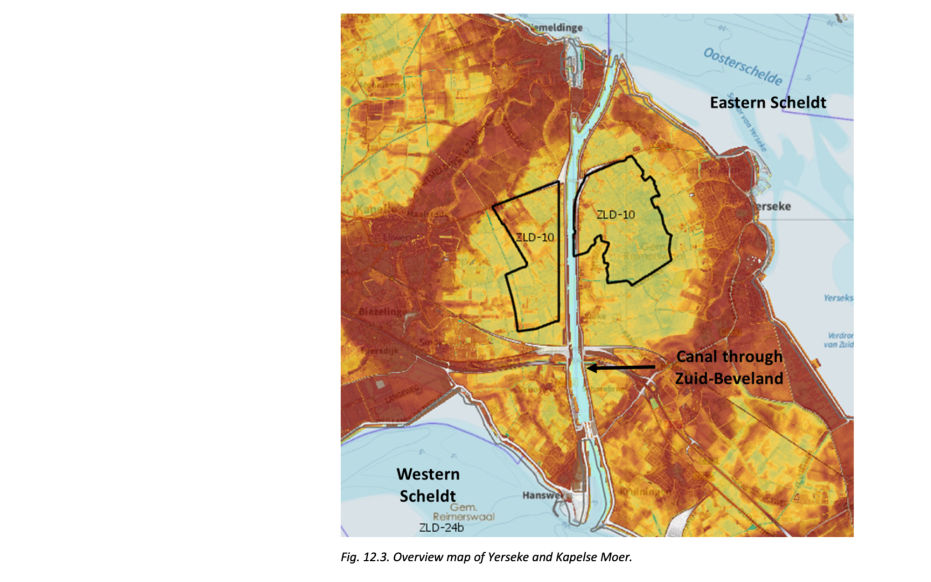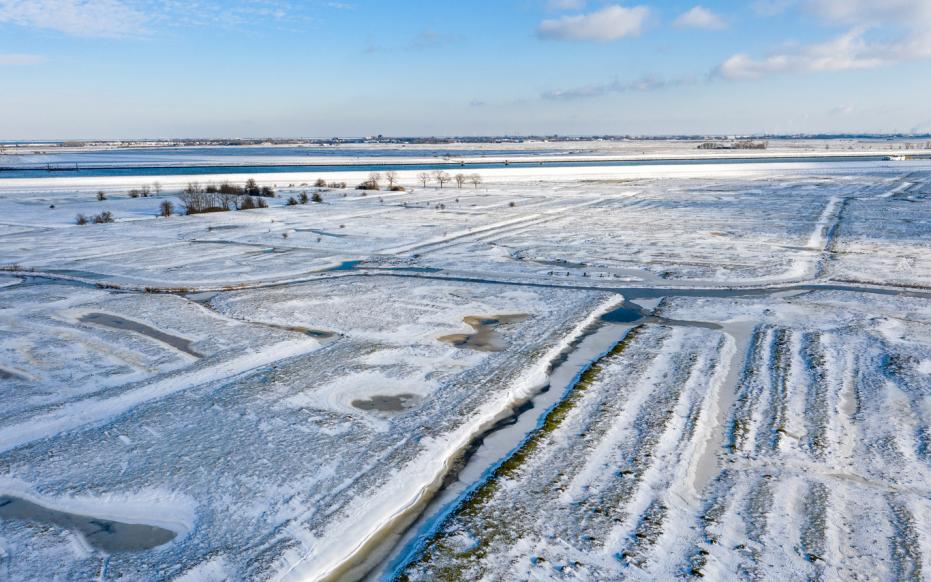Oudland
Areas like these, which had little erosion after the coastal barrier was broken, are counted as the Oudland. The Oudland of Yerseke and the Kapelse Moer was diked in the 12th century. Large-scale erosion did not occur on the Oudland after the coastal barrier was breached, but the old island core was cut by tidal creeks in several places. In the creeks, stronger currents than outside them eroded away some of the peat and deposited sand. Outside the creeks, the flow velocity of the water was lower and mostly clay was transported and deposited on the peat. Over the centuries, the peat and clay outside the creeks contracted, causing the land surface to decrease. Therefore, today the former gullies lie higher in the landscape and form so-called creek ridges. The low-lying areas between the creek ridges are called pool soils. The geosite itself lies in such pool land, which is surrounded by several larger creek ridges.


